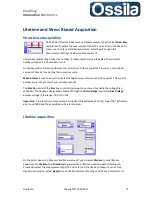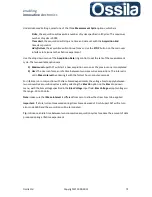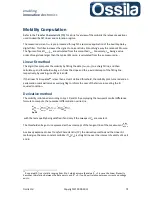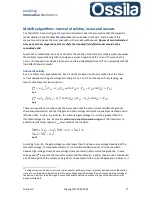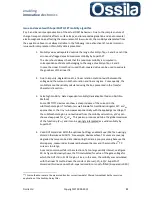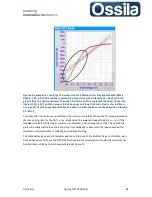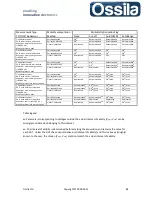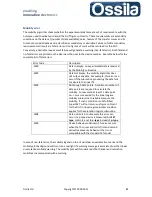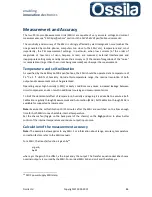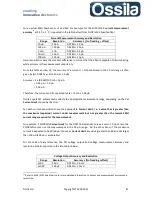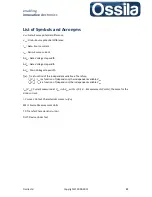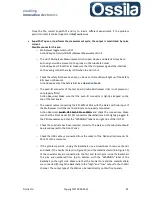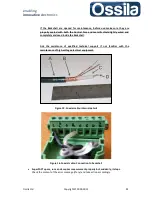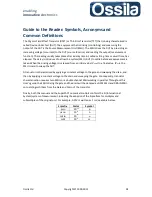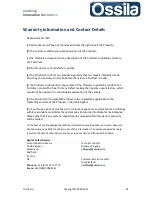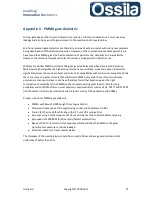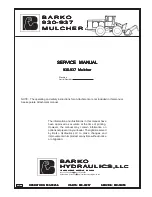
enabling
innovative
electronics
Ossila Ltd
Copyright © 2009-2015
83
Figure 30. Example of a too large fit interval. Linear Fit Method, User Falg Enabled with[VStart,
VEnd] = [-20, -60 V]. The red line represent the linear fit over the interval [-20, -60 V], with the
green a blue line upper and lower fit bonds. Clearly the, red line represent the linear fit over the
interval [-20, -60 V], with the green a blue line upper and lower fit bonds. Clearly the, red line is
not a ‘good’ fit of the experimental data (red dots). A better choice could have been the interval [-
45, -60 V].
To reduce the risk of erroneous validation, the user must carefully choose the TC sweep parameters
that are appropriate for the DUTs, or carefully select the lower and upper bonds [V
Start,
V
End
] if the
flag
User
is selected. After the acquisition is completed, a visual inspection of the TC and mobility
plots will usually suffice to validate the data. User validation is always strictly required when the
mobility is calculated without enabling any optimisation flag.
The table below gives a set of recommendations on the use of the Mobility flags. In this table,
well-
defined behaviour
DUTs are the TFTs/OFETs whose linear and saturation transfer characteristic can
be described using Eqs. 3 and 6, respectively, see figure 14.




